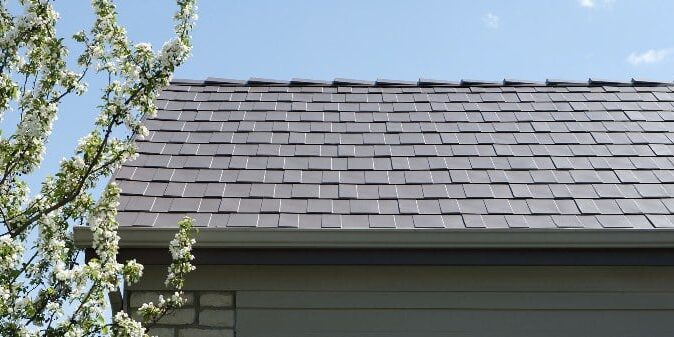In the ever-evolving world of building materials, metal roof shingles have emerged as a standout choice for homeowners and builders alike. Renowned for their durability, aesthetic appeal, and energy efficiency, metal roof shingles are redefining roofing standards. This comprehensive guide delves into the many facets of metal roof shingles, exploring why they might just be the best option for your roofing needs.
Introduction to Metal Roof Shingles
Understanding Metal Roof Shingles
Metal roof shingles represent a significant leap in roofing technology. Unlike traditional roofing materials, these shingles are designed to withstand severe weather conditions while maintaining their aesthetic appeal.
Benefits Over Traditional Roofing Materials
Metal roof shingles offer a host of benefits over their traditional counterparts. They are known for their longevity, resistance to elements, and minimal maintenance requirements, making them a cost-effective and reliable roofing solution.
History and Evolution of Metal Roof Shingles
The evolution of metal roof shingles is a testament to advancements in building materials. From simple metal sheets to today’s sophisticated shingles, they have come a long way in terms of design, functionality, and efficiency.
Types of Metal Used in Roof Shingles
Aluminum Shingles: Properties and Uses
Aluminum shingles are lightweight yet durable. They are resistant to corrosion and are an ideal choice for coastal areas where salt spray is a concern.
Steel Shingles: Durability and Style
Steel, known for its strength, is a popular choice in metal roof shingles. Coated with zinc or a zinc-aluminum alloy, these shingles offer enhanced protection against corrosion.
Copper and Zinc Shingles: Aesthetic and Longevity
Copper and zinc shingles are prized for their longevity and distinctive appearance. Over time, they develop a protective patina that adds to their charm and further protects the roof.
Design and Aesthetic Appeal
Variety of Styles and Colors
One of the most appealing aspects of metal roof shingles is their variety in styles and colors. They can mimic traditional shingles, tiles, or even wood shakes, offering flexibility to match any architectural style.
Customization Options for Unique Homes
Customization is a significant advantage with metal roof shingles. Homeowners can choose from a wide range of colors, finishes, and designs to create a unique look for their homes.
Comparing Aesthetics with Other Roofing Materials
Compared to other roofing materials, metal roof shingles offer a modern and sleek appearance. Their versatility in design allows them to enhance the curb appeal of both contemporary and traditional homes.
Durability and Lifespan of Metal Roof Shingles
Longevity Compared to Traditional Shingles
Metal roof shingles boast an impressive lifespan, often lasting 40-70 years or more, significantly outlasting asphalt shingles, which typically last 15-20 years. This longevity is a testament to the robustness of metal as a roofing material.
Resistance to Weather and Environmental Factors
One of the standout features of metal roof shingles is their resistance to diverse weather conditions, including heavy rain, snow, high winds, and even fire. This resilience ensures consistent protection for your home across seasons.
Maintenance and Care Requirements
Maintenance of metal roof shingles is relatively minimal. Regular inspections and occasional cleaning are generally sufficient to maintain their condition, making them a hassle-free option for homeowners.
Energy Efficiency and Sustainability
Insulation and Energy Saving Benefits
Metal roof shingles are excellent at reflecting solar heat, which can reduce cooling costs in the summer. Additionally, they can be easily insulated to improve energy efficiency, leading to significant savings on energy bills.
Eco-friendly Manufacturing and Recycling Potential
Metal roofing is often made from recycled materials and is itself fully recyclable at the end of its life. This sustainable lifecycle minimizes the environmental impact compared to traditional roofing materials that end up in landfills.
Impact on Home Energy Costs
The energy efficiency of metal roof shingles can significantly lower home energy costs. In some cases, homeowners may observe a reduction in energy bills, making metal roofs an economically smart choice in the long term.
Installation of Metal Roof Shingles
Professional Installation vs. DIY
While DIY installation of metal roof shingles is possible for the experienced homeowner, professional installation is recommended to ensure optimal performance and longevity. This is particularly important for ensuring proper installation techniques and safety.
Understanding the Installation Process
The installation process of metal roof shingles involves careful planning and precision. It includes preparing the roof deck, installing underlayment, and then laying the shingles in an overlapping pattern to ensure complete coverage and water tightness.
Common Challenges and Solutions
Challenges in installing metal roof shingles can include ensuring proper alignment, dealing with complex roof designs, and managing thermal expansion and contraction. Experienced installers can navigate these challenges effectively, ensuring a high-quality finish.
Cost Analysis and Return on Investment
Initial Costs vs. Long-Term Savings
While the initial cost of metal roof shingles may be higher than traditional materials, the long-term savings are significant. Their durability and low maintenance requirements often translate to a lower overall cost over the roof’s lifespan.
Comparing Costs with Other Roofing Options*
In a comparative analysis with other roofing options, metal roof shingles offer a favorable balance of cost-efficiency and performance. The upfront investment is offset by the extended lifespan and reduced repair and replacement costs.
Resale Value and Cost-Benefit Analysis*
Investing in metal roof shingles can also increase your home’s resale value. Their longevity, aesthetic appeal, and energy efficiency are attractive features to potential buyers, enhancing the overall value of your property.
Common Myths and Misconceptions
Debunking Myths About Noise*
A common myth is that metal roof shingles are noisy during rain or hail. However, when properly installed with solid sheathing, a metal roof can be as quiet as other roofing materials.
Addressing Concerns About Rust and Corrosion*
Modern metal roof shingles are designed with rust and corrosion resistance in mind. Coatings and alloys, such as galvanized and galvalume steel, provide effective protection against these elements.
Clarifying Misconceptions on Hail Damage*
While no roofing material is hail-proof, metal roof shingles are more resistant to hail damage compared to traditional shingles. Any dents are often cosmetic and don’t compromise the roof’s structural integrity or performance.
Metal Roof Shingles in Different Climates
Performance in Extreme Weather Conditions*
Metal roof shingles excel in various extreme weather conditions. They are effective in both hot and cold climates, reflecting heat in the summer and providing excellent insulation in the winter.
Suitability for Varied Climate Zones*
Whether you live in a region with heavy snowfall, high winds, or intense sun, metal roof shingles are a suitable option. Their versatility makes them ideal for a wide range of climate zones.
Adaptability to Seasonal Changes*
The adaptability of metal roof shingles to seasonal changes is another benefit. They expand and contract with temperature changes, maintaining their integrity and functionality throughout the year.
Frequently Asked Questions (FAQs)
Q1: How long do metal roof shingles typically last?
A1: Metal roof shingles can last anywhere from 40 to 70 years, depending on the material and maintenance. This is significantly longer than traditional asphalt shingle roofs, which typically last 15 to 20 years.
Q2: Are metal roof shingles more expensive than traditional shingles?
A2: Initially, metal roof shingles tend to be more expensive than traditional asphalt shingles. However, considering their longer lifespan and lower maintenance costs, they can be more cost-effective in the long run.
Q3: Can metal roof shingles withstand extreme weather conditions?
A3: Yes, metal roof shingles are highly durable and can withstand extreme weather conditions such as heavy rain, snow, high winds, and even hail. They are also fire-resistant.
Q4: Are metal roofs noisy during rain or hail storms?
A4: Contrary to common belief, metal roofs are not necessarily noisier during rain or hail. When installed with proper insulation and underlayment, metal roofs can be as quiet as other roofing materials.
Q5: Do metal roof shingles require a lot of maintenance?
A5: Metal roof shingles require relatively little maintenance. Periodic inspections and cleaning to remove debris are usually sufficient to maintain their condition.
Q6: Are metal roof shingles energy efficient?
A6: Yes, metal roof shingles are highly energy-efficient. They reflect solar radiant heat, which can help reduce cooling costs during the warmer months.
Q7: Is it possible to install metal roof shingles over existing shingles?
A7: In many cases, metal roof shingles can be installed over existing shingles, but it’s essential to consult with a professional to ensure your roof structure can support the additional weight and that this complies with local building codes.
Q8: Do metal roof shingles increase a home’s resale value?
A8: Yes, due to their longevity, durability, and aesthetic appeal, metal roof shingles can increase a home’s resale value.
Q9: Are metal roofs environmentally friendly?
A9: Metal roofs are considered environmentally friendly due to their high recyclable content and recyclability at the end of their lifespan. They can also be installed over existing roofs, reducing waste.
Q10: Can you walk on a metal shingle roof?
A10: While metal roofs are durable, walking on them can be risky and potentially damage the shingles. It’s best to hire professionals for any roof work or inspection.
Conclusion
Metal roof shingles represent the future of roofing, offering a blend of durability, aesthetic appeal, energy efficiency, and sustainability. Their advantages over traditional roofing materials make them an excellent choice for modern homes.
The future of metal roof shingles is promising, with ongoing advancements in materials science and manufacturing techniques. These developments are expected to further enhance their performance and aesthetic options.
In conclusion, metal roof shingles are a wise investment for homeowners seeking a long-term roofing solution. Their multitude of benefits, coupled with evolving technologies, make them a top choice for residential and commercial buildings alike.
This comprehensive guide aims to provide an in-depth understanding of metal roof shingles, covering all aspects from types, installation, and benefits, to common myths. With this knowledge, homeowners and builders can make informed decisions about their roofing needs, ensuring both aesthetic appeal and long-lasting performance.








Great read. Metal roof shingles really are a smart long-term investment, lightweight, fire-resistant, and they look great too. I found this helpful while researching options for a roof upgrade.